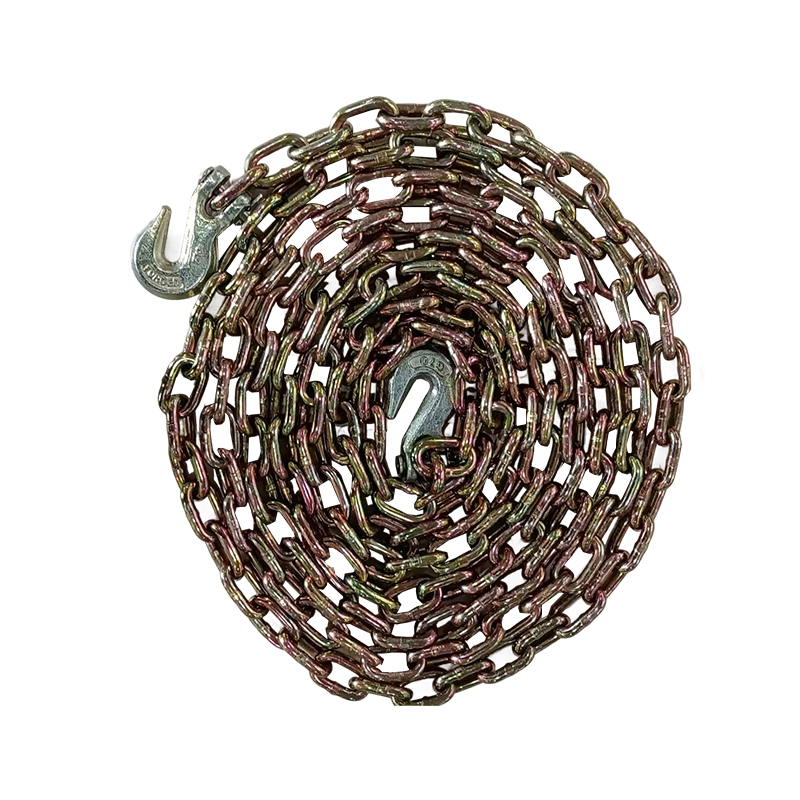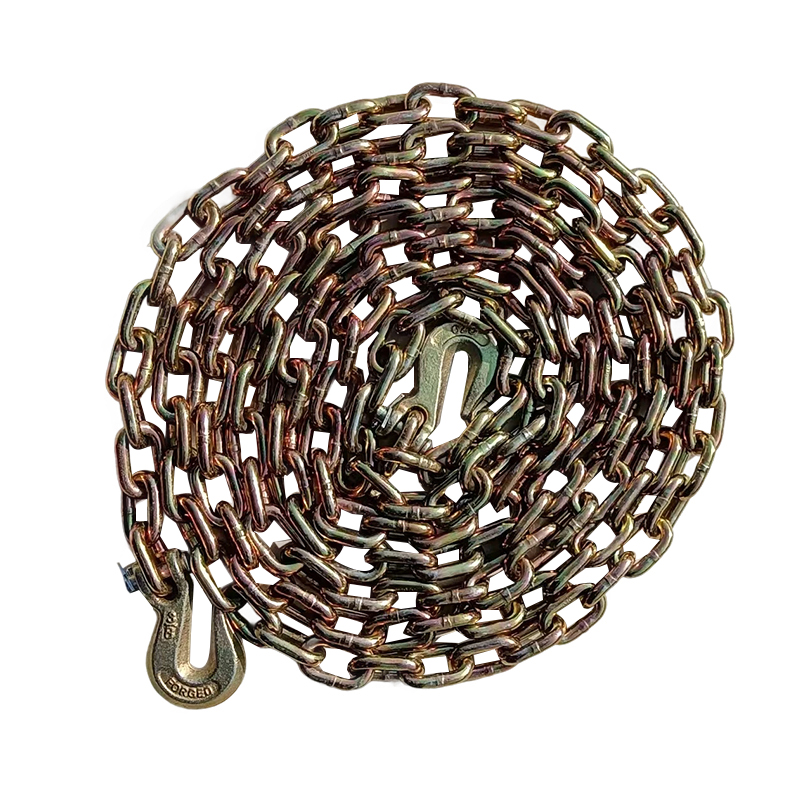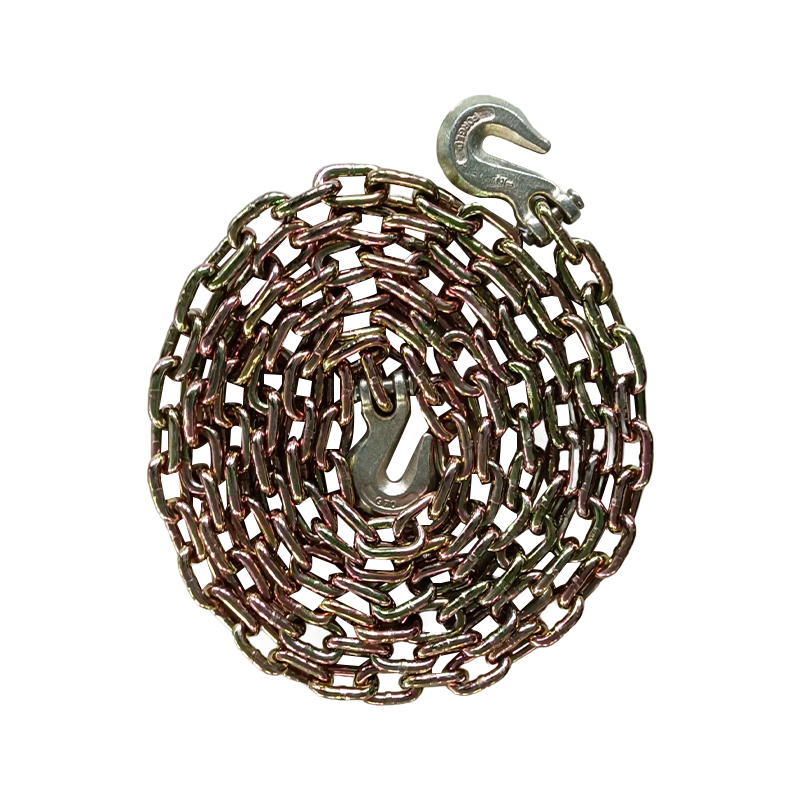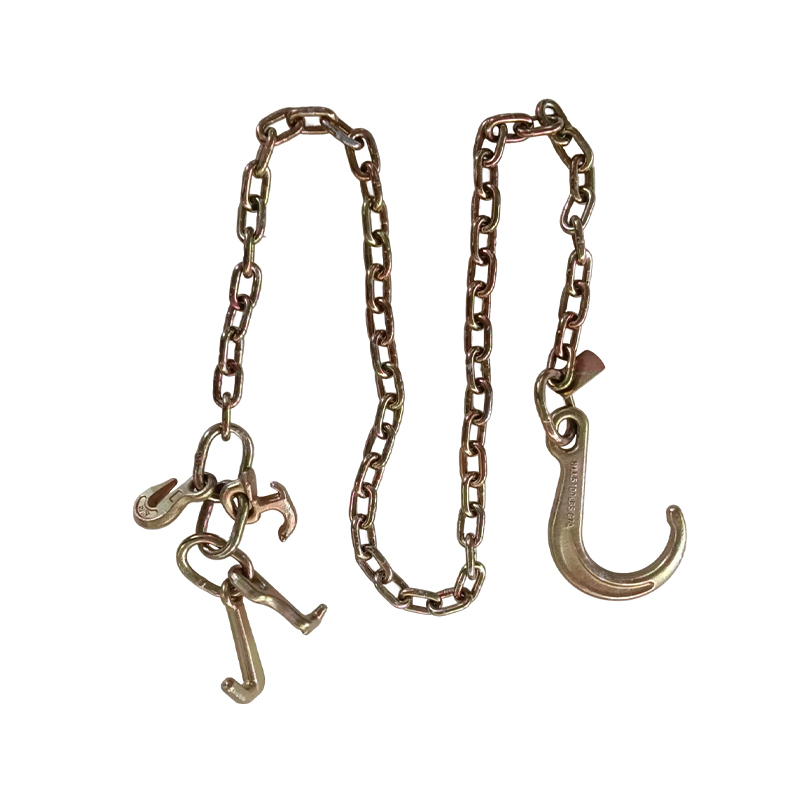Are bundling chains susceptible to wear, burrs, or fatigue cracks from frequent bending, twisting, and friction?
Release Time : 2025-08-27
As a critical fastening tool for securing and transporting heavy cargo, a bundling chain's reliability is directly related to the safety of personnel and property. In practical applications, chains are not always in a static tension state but often experience frequent bending, twisting, and surface friction. For example, they must navigate around sharp corners when securing irregular equipment, undergo repeated flexion and extension with the movement of cargo during loading and unloading, and constantly scrape against the ground and car body panels during hauling. These dynamic conditions severely test the chain's structural integrity, exposing it to potential damage such as wear, burrs, and even fatigue cracks.
Chain wear typically begins at the point of surface contact. When a chain rubs against rough surfaces such as concrete, metal edges, or gravel, the outer protective layer, such as the galvanizing or coating, gradually wears away, exposing the base metal. With increased use, scratches and grooves begin to appear on the metal surface, reducing the local cross-section and consequently the load-bearing capacity. If a chain is exposed to sharp objects for a long time, it may develop nicks or indentations. These defects become stress concentration points, accelerating material fatigue under subsequent loads. Especially in humid or corrosive environments, worn areas are more susceptible to rust, further weakening the chain.
Burr formation is often related to manufacturing processes or wear and tear. High-quality chains undergo precision forging and deburring during production, resulting in a smooth, flawless surface. However, during frequent bending and twisting, the links squeeze and slide against each other. Especially when the chain is at an angle or under uneven load, the metal edges may curl due to plastic deformation, forming tiny protrusions. These burrs not only affect the handling feel and may cause scratches to the operator, but they can also snag on clothing, ropes, or other components during subsequent use, causing unexpected interference. Furthermore, burred areas are more susceptible to the accumulation of dirt and moisture, becoming the starting point for corrosion and crack initiation.
Fatigue cracks are even more insidious and dangerous. When a chain is subjected to repeated alternating loads, even before reaching its breaking point, damage gradually accumulates within the material due to microscopic lattice slip. Bending and twisting exacerbate this cyclic stress, particularly at the inner bend of the chain link, at the pin connection, or at the pitch change area. This uneven stress distribution is highly susceptible to microcracks. Initial cracks are imperceptible to the naked eye, but with increased use, they slowly expand, eventually leading to sudden fracture. This type of failure often occurs suddenly, with no obvious precursors, and poses a significant risk to safe use.
A chain's fatigue and wear resistance are closely related to its material and manufacturing process. Chains made of high-quality alloy steel and subjected to full heat treatment have a denser grain structure, excellent tensile strength and toughness, and are better able to resist deformation and crack propagation. The forging process ensures a continuous distribution of metal fibers along the direction of force, enhancing overall durability. In contrast, welded or cold-worked chains may have weak links at their joints, making them more susceptible to failure under dynamic loads.
To prevent damage, proper use and regular inspection are crucial. Avoid running the chain directly over sharp edges; install corner guards or soft padding to reduce wear. When tightening, keep the chain straight and reduce unnecessary twisting. After use, clean surface dirt and salt promptly and store in a dry environment to prevent corrosion and exacerbate material degradation.
In summary, bundling chains do face the risk of wear, burrs, and fatigue cracks from frequent bending, twisting, and friction. While these damages are gradual, they can develop into serious safety incidents if neglected. Therefore, selecting high-quality products, standardizing operating procedures, and establishing a regular inspection system are essential measures to ensure the long-term safe operation of bundling chains.
Chain wear typically begins at the point of surface contact. When a chain rubs against rough surfaces such as concrete, metal edges, or gravel, the outer protective layer, such as the galvanizing or coating, gradually wears away, exposing the base metal. With increased use, scratches and grooves begin to appear on the metal surface, reducing the local cross-section and consequently the load-bearing capacity. If a chain is exposed to sharp objects for a long time, it may develop nicks or indentations. These defects become stress concentration points, accelerating material fatigue under subsequent loads. Especially in humid or corrosive environments, worn areas are more susceptible to rust, further weakening the chain.
Burr formation is often related to manufacturing processes or wear and tear. High-quality chains undergo precision forging and deburring during production, resulting in a smooth, flawless surface. However, during frequent bending and twisting, the links squeeze and slide against each other. Especially when the chain is at an angle or under uneven load, the metal edges may curl due to plastic deformation, forming tiny protrusions. These burrs not only affect the handling feel and may cause scratches to the operator, but they can also snag on clothing, ropes, or other components during subsequent use, causing unexpected interference. Furthermore, burred areas are more susceptible to the accumulation of dirt and moisture, becoming the starting point for corrosion and crack initiation.
Fatigue cracks are even more insidious and dangerous. When a chain is subjected to repeated alternating loads, even before reaching its breaking point, damage gradually accumulates within the material due to microscopic lattice slip. Bending and twisting exacerbate this cyclic stress, particularly at the inner bend of the chain link, at the pin connection, or at the pitch change area. This uneven stress distribution is highly susceptible to microcracks. Initial cracks are imperceptible to the naked eye, but with increased use, they slowly expand, eventually leading to sudden fracture. This type of failure often occurs suddenly, with no obvious precursors, and poses a significant risk to safe use.
A chain's fatigue and wear resistance are closely related to its material and manufacturing process. Chains made of high-quality alloy steel and subjected to full heat treatment have a denser grain structure, excellent tensile strength and toughness, and are better able to resist deformation and crack propagation. The forging process ensures a continuous distribution of metal fibers along the direction of force, enhancing overall durability. In contrast, welded or cold-worked chains may have weak links at their joints, making them more susceptible to failure under dynamic loads.
To prevent damage, proper use and regular inspection are crucial. Avoid running the chain directly over sharp edges; install corner guards or soft padding to reduce wear. When tightening, keep the chain straight and reduce unnecessary twisting. After use, clean surface dirt and salt promptly and store in a dry environment to prevent corrosion and exacerbate material degradation.
In summary, bundling chains do face the risk of wear, burrs, and fatigue cracks from frequent bending, twisting, and friction. While these damages are gradual, they can develop into serious safety incidents if neglected. Therefore, selecting high-quality products, standardizing operating procedures, and establishing a regular inspection system are essential measures to ensure the long-term safe operation of bundling chains.







